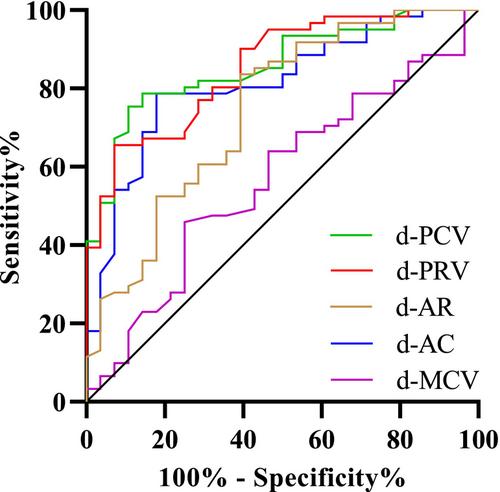Tissue Doppler imaging of the diaphragm and outcome of weaning from mechanical ventilation
Abstract
Purpose
This study aimed to employ tissue Doppler imaging to monitor diaphragmatic peak velocity and acceleration during contraction and relaxation in mechanically ventilated patients, with the objective of assessing the potential utility of this technique in predicting weaning outcomes.
Methods
A total of 89 adult subjects were recruited in this study. After 30 min of spontaneous breathing trial, the diaphragm motion parameters, including peak contraction velocity, peak relaxation velocity, contraction acceleration and relaxation acceleration, were measured in real time using tissue Doppler imaging. According to the results of weaning, the patients were divided into successful weaning group and failed weaning group. The differences of diaphragmatic tissue Doppler imaging monitoring indicators between the two groups were analysed, and the receiver operating characteristic curve was drawn to analyse the value of each ultrasound parameter in predicting weaning.
Results
In the successful weaning group, there were 61 subjects, while in the failed weaning group, there were 28 subjects. The peak contraction velocity, peak relaxation velocity, contraction acceleration and relaxation acceleration of the diaphragm were significantly higher in the failed weaning group compared to the successful weaning group (P < 0.05). The area under the curve of diaphragmatic peak contraction velocity, peak relaxation velocity, diaphragmatic contraction acceleration and diaphragmatic relaxation acceleration were 0.81 (0.72–0.91), 0.85 (0.77–0.93), 0.74 (0.63–0.86) and 0.86 (0.78–0.94), respectively.
Conclusions
The diaphragm ultrasonic tissue Doppler imaging variables can serve as predictive indicators for weaning mechanical ventilation in patients, thus providing an effective tool to assist critical care physicians in determining the optimal timing for weaning mechanical ventilation.


 求助内容:
求助内容: 应助结果提醒方式:
应助结果提醒方式:


